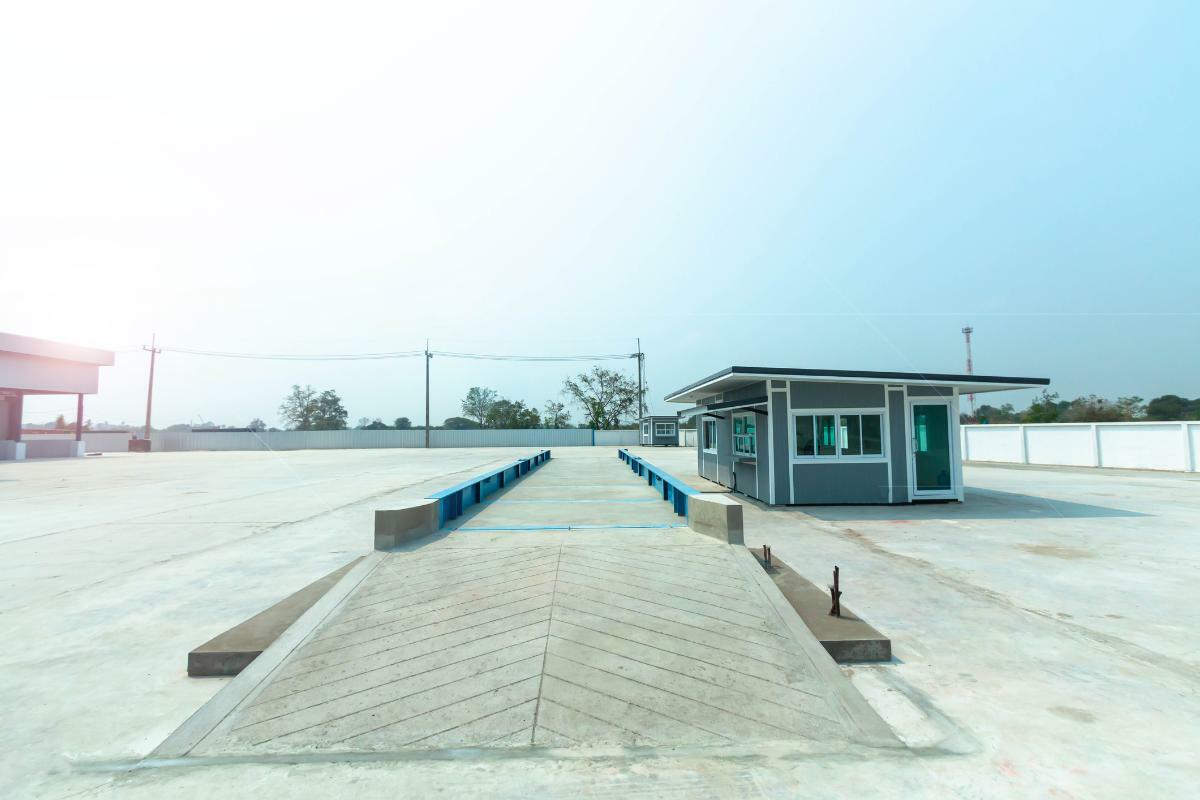 Many non-commercial drivers and novice commercial drivers wonder if they must stop at weigh stations even when they’re running empty or without cargo.
Many non-commercial drivers and novice commercial drivers wonder if they must stop at weigh stations even when they’re running empty or without cargo.
A modern weigh station is a technological marvel that can evaluate the entire truck, driver, and fleet record while you’re pulling in.
What Is WIMS?
The metal plates on the highway before the weigh station are weigh-in-motion scales or system (WIMS) that show the scales master if the vehicle is under the maximum *Gross Vehicle Weight Rating (GVWR) the vehicles weight, the weight over a single tire, or over an axle or set of axles.
*“The GVWR refers to the maximum weight a vehicle is designed to carry including the net weight of the vehicle with accessories, plus the weight of passengers, fuel, and cargo. The GVWR is a safety standard used to prevent overloading.”—Commercial Vehicle Safety & Enforcement.
However, the truth is, weigh stations do more than just weigh commercial vehicles.
There’s also a sensor on the pole above the WIMS that “x-rays” the vehicle cargo hold to see if they’re hauling cargo or if it is empty. Plus, the registration plate and stickers reveal a lot of information about the vehicle and its owner to the scale master, such as valid permits, registration and insurance status, and safety measurement score.
Weigh stations conduct roadside inspections to determine if commercial vehicles and other multi-axled vehicles are safe and road-worthy.
What Is the Safety Measurement System (SMS) & How Does it Affect Roadside Inspections?
When a driver or carrier gets a traffic or safety violation conviction, an hours of service (HOS) rules violation, or they are found responsible for a vehicle accident, the DOT FMCSA assesses Compliance, Safety, and Accountability (CSA) severity points.
These severity points are entered into one of the seven Behavior Analysis and Safety Improvement Category (BASICs) categories:
- Unsafe driving
- Collision indicators
- Hours of Service (HOS) compliance.
- Vehicle maintenance
- Alcohol or Controlled substances
- Hazardous Material (HM) compliance
- Driver fitness
If the conviction or collision responsibility falls into an area with another violation within the previous six months, the CSA severity points will be multiplied by three before being placed in that category, and a second violation with six months to a year, is multiplied by two. Those more than one year are held at face value for another year before being removed from the carriers DataQs record.
Convictions, collisions, and other substantiated violations for all drivers using the carrier’s DOT number are counted against its percentile, which is compiled by comparing its number of vehicles and miles driven by those of other fleets.
A percentile of 50 or below is considered safe; a percentile from 51 to 74 is considered marginal, while a percentile of 75 or higher is considered unsafe and will be considered for DOT FMCSA interventions.
Most notably is that all vehicles using the carriers DOT number could be red-lighted at weigh stations for safety inspections. Likewise, a certain percentage of those carrier’s with a “marginal” safety record will be pulled in for a roadside inspection, regardless of their WIMS reading.
By-passing an open weight station when you were red-lighted to stop is a misdemeanor crime in CA. The CHP will chase you down, bring you back, and begin the inspection.
Therefore, although empty trucks are usually green-lighted, that’s not always the case, so if you’re unsure if you should stop or not, err on the side of caution and pull in.
Once your truck enters the weigh station it will be weighed again to ensure the weight over each tire and set of axles is within the CA Vehicle Code (VC) Section 35551, Axle Limits.
When the vehicle is not within limits and is without a valid permit for the state of CA, a citation will be issued for violation of CA VC Section 35784, Permits and Agreements.
When the vehicle is overweight by up to 4,500, the fine is typically $500. However, if the vehicle is over by more than 4,500, the CHP or other law enforcement could write you up for a misdemeanor. When you see the traffic ticket has the “M” circled, you should immediately invoke your “right to remain silent,” and call a CA traffic defense attorney with trial experience.
Contact Bigger & Harman to Resolve WIMS & Roadside Inspection Issues in Truckee Traffic Court
Call Bigger & Harman, APC, at (661) 349-9300 — use our contact form to send a picture of your ticket/violation or email attorney@biggerharmanlaw.com.
Se habla Español (661) 349-9755.
Download our e-book, Protecting Your Commercial Driver License.
References:
The DMV Portal CA Commercial Driver Handbook.
CA VC Section 35551, Axle Limits & Section 35784, Permits and Agreements.
